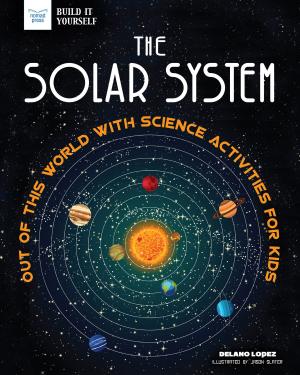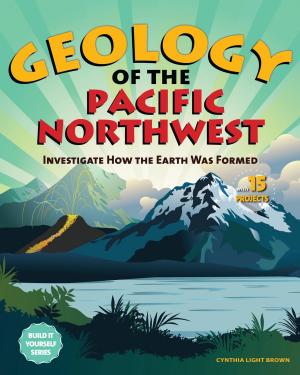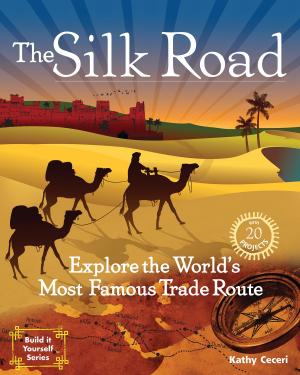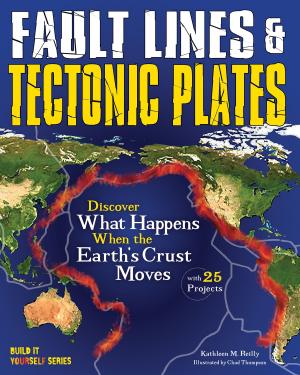| Author: | Matthew Brenden Wood | ISBN: | 9781619306622 |
| Publisher: | Nomad Press | Publication: | May 1, 2018 |
| Imprint: | Nomad Press | Language: | English |
| Author: | Matthew Brenden Wood |
| ISBN: | 9781619306622 |
| Publisher: | Nomad Press |
| Publication: | May 1, 2018 |
| Imprint: | Nomad Press |
| Language: | English |
On July 20, 1969, Neil Armstrong landed gently on the lunar surface and became the first person to set foot on another world. People around the world stopped what they were doing to crowd around television sets and radios to witness one of the greatest achievements in human history—a man walking on the moon. How did we get there? Why haven’t we gone back?
In The Space Race: How the Cold War Put Humans on the Moon, kids ages 12 to 15 explore the race to the moon against the chilling backdrop of the Cold War. The Space Race was the period during and after the Cold War when America and the Soviet Union participated in a fierce competition to see which country could beat the other into space. It was a time of bitterness, fear, and secrecy, but it was also a moment in history when two countries directed resources toward pushing themselves to reach goals that were once thought unattainable. Would we have succeeded as far as we did without the competition to be first?
While Neil Armstrong will be remembered as the first person to set foot on the moon, the people and events behind this accomplishment populate a fascinating tale of politics, science, technology, and teamwork that resulted in what might be the greatest accomplishment of the twentieth century. In The Space Race, middle school students explore this history of science and discover the political, social, and economic factors that led to incredible achievements in space, including the launch of Sputnik, the launch of Explorer I, and eventually, the landing of Apollo 11 on the moon, where Neil Armstrong took those famous first steps.
By showing space events against the backdrop of the turmoil back on Earth, readers understand that scientific achievement doesn't happen in a vacuum, even when it happens in space! A wealth of links to primary sources makes this an interactive learning experience while science-minded STEAM activities link the historical and scientific material. Throughout the fun facts, cool photos, and investigative projects, kids are encouraged to explore creative and critical thinking and problem-solving strategies.
The Space Race is one book in a set of four that explore great events of the twentieth century. Inquire and Investigate titles in this set include The Vietnam War; World War II: From the Rise of the Nazi Party to the Dropping of the Atomic Bomb; Globalization: Why We Care About Faraway Events; and The Space Race: How the Cold War Put Humans on the Moon.
Nomad Press books in the Inquire & Investigate series integrate content with participation, encouraging older readers to engage in student-directed learning as opposed to teacher-guided instruction. This student-centered approach provides readers with the tools they need to become inquiry-based learners. Common Core State Standards, the Next Generation Science Standards, and STEM Education all place project-based learning as key building blocks in education. Combining content with inquiry-based projects stimulates learning and makes it active and alive. Consistent with our other series, all of the activities in the books in the Inquire & Investigate series are hands-on, challenging readers to develop and test their own hypotheses, ask their own questions, and formulate their own solutions. In the process, readers learn how to analyze, evaluate, and present the data they collect. As informational texts our books provide key ideas and details from which readers can work out their own inferences. Nomad’s unique approach simultaneously grounds kids in factual knowledge while allowing them the space to be curious, creative, and critical thinkers.
On July 20, 1969, Neil Armstrong landed gently on the lunar surface and became the first person to set foot on another world. People around the world stopped what they were doing to crowd around television sets and radios to witness one of the greatest achievements in human history—a man walking on the moon. How did we get there? Why haven’t we gone back?
In The Space Race: How the Cold War Put Humans on the Moon, kids ages 12 to 15 explore the race to the moon against the chilling backdrop of the Cold War. The Space Race was the period during and after the Cold War when America and the Soviet Union participated in a fierce competition to see which country could beat the other into space. It was a time of bitterness, fear, and secrecy, but it was also a moment in history when two countries directed resources toward pushing themselves to reach goals that were once thought unattainable. Would we have succeeded as far as we did without the competition to be first?
While Neil Armstrong will be remembered as the first person to set foot on the moon, the people and events behind this accomplishment populate a fascinating tale of politics, science, technology, and teamwork that resulted in what might be the greatest accomplishment of the twentieth century. In The Space Race, middle school students explore this history of science and discover the political, social, and economic factors that led to incredible achievements in space, including the launch of Sputnik, the launch of Explorer I, and eventually, the landing of Apollo 11 on the moon, where Neil Armstrong took those famous first steps.
By showing space events against the backdrop of the turmoil back on Earth, readers understand that scientific achievement doesn't happen in a vacuum, even when it happens in space! A wealth of links to primary sources makes this an interactive learning experience while science-minded STEAM activities link the historical and scientific material. Throughout the fun facts, cool photos, and investigative projects, kids are encouraged to explore creative and critical thinking and problem-solving strategies.
The Space Race is one book in a set of four that explore great events of the twentieth century. Inquire and Investigate titles in this set include The Vietnam War; World War II: From the Rise of the Nazi Party to the Dropping of the Atomic Bomb; Globalization: Why We Care About Faraway Events; and The Space Race: How the Cold War Put Humans on the Moon.
Nomad Press books in the Inquire & Investigate series integrate content with participation, encouraging older readers to engage in student-directed learning as opposed to teacher-guided instruction. This student-centered approach provides readers with the tools they need to become inquiry-based learners. Common Core State Standards, the Next Generation Science Standards, and STEM Education all place project-based learning as key building blocks in education. Combining content with inquiry-based projects stimulates learning and makes it active and alive. Consistent with our other series, all of the activities in the books in the Inquire & Investigate series are hands-on, challenging readers to develop and test their own hypotheses, ask their own questions, and formulate their own solutions. In the process, readers learn how to analyze, evaluate, and present the data they collect. As informational texts our books provide key ideas and details from which readers can work out their own inferences. Nomad’s unique approach simultaneously grounds kids in factual knowledge while allowing them the space to be curious, creative, and critical thinkers.















